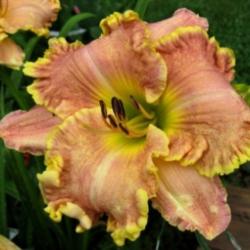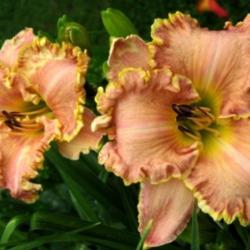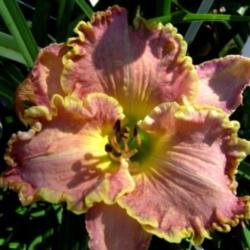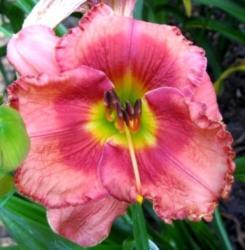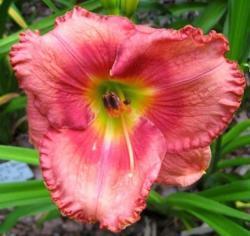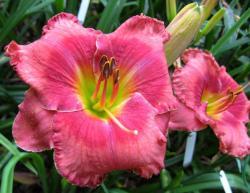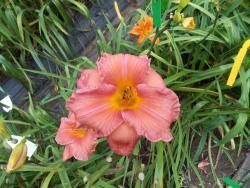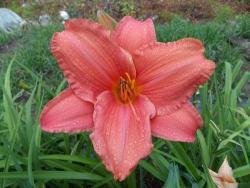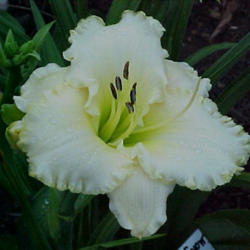Becky, good luck with that. I've been searching high and low, and I think that we may need to go back to older cultivars to get resistance. (But then, we lose the modern form and ruffles and rebloom and taller scape height and all those goodies.

)
Among more recent tet daylilies, Petit's 'December Wedding' may or may not have some rust resistance
http://www.petitdaylilies.com/... ; it is too new here to tell, and it looks like a very pale pink to me, as opposed to being white-ish.
For older tet daylilies, I am looking at some old Stamile cultivars. 'Crystalline Pink' is supposedly resistant (thus far no rust here) with an ATP score of 1.0. I have no seedling from it yet, however, so I can't comment on clarity or anything like that. The color is a pink over what seems to be a near-white base, but the pink does tend to blotch, and the flowers don't open as flat as I would like, plus the form is older.
Older near-white tets such as Stamile's 'Alpine Snow' might be useful; it comes out of tet 'Monica Marie' which is resistant.
I haven't bought many dips these past several years (excepting my Huben binge), so I can only point to older cultivars, or more recent ones derived from older cultivars.
'Tuscawilla Tranquillity' has been resistant here (ATP rust resistance score of 1.3). It is not 'white', but it is whiter than the tet near-whites that I have.
'Newberry White Dove' has thus far been resistant. It is higher here than the registered 18"; I have measured the scape height ranging from 21" - 25". It will sometimes rebloom here in the early fall. I has a long pistil, though, and I have not yet been able to set pods on it.
Mike Huben has done a lot of work with white dips, especially focusing on certain forms and on continuous rebloom. Some of them are clear and/or color clarifiers, but I don't know about their rust resistance. (I think that 'Tuscawilla Tranquillity' is there however many generations back, so that at least is hopeful.) You might check them out, though; I purchased mine from Harmon Hill Farm.
http://www.harmonhillfarm.com/...
Good luck!
(I have a cream to near-white tet seedling which I have hopes for on the rust resistance front; it has been exposed to a lot of rust this past year, but has had no obvious outbreak (not that I've been examining it closely, you understand). The flowers open well and are attractive (at least, to me

), but thus far it is lacking in budcount and branching, and has not yet rebloomed. I think I need to move it and treat it better.)
